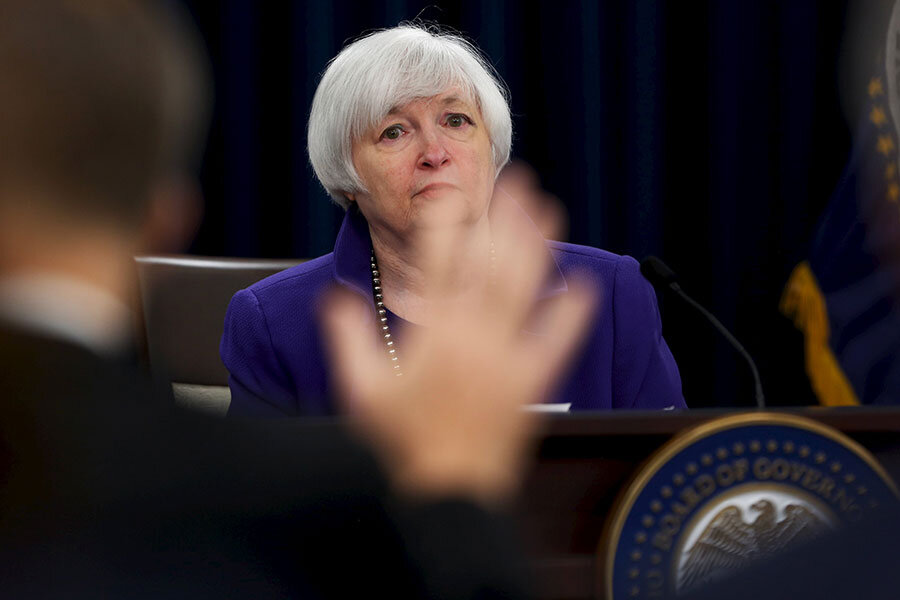Federal Reserve hikes interest rates: Are its policies for the 1 percent?
Loading...
| Washington
The Federal Reserve made its first interest-rate increase in almost a decade Wednesday, upping the target for short-term bank lending by one-quarter point to between 0.25 and 0.5 percent.
The move got plenty of advance warning, and United States financial markets generally took it in stride. But the action was controversial as well as anticipated.
Criticism of the Fed on all fronts has increased markedly since the Great Recession. Some of the criticism has been purely financial, with pundits Wednesday questioning the timing and wisdom of the rate hike.
But more deeply, the criticism is a sign of Americans’ heightened anxiety about an economy that seems to now be in a state of persistently low gear. At a time when income inequality has become a growing political concern, the question is whether America's central bank is fundamentally serving the interests of all the people or mainly of bankers and the wealthy.
Specifically, have Fed policies been made the nation's rich-poor income gap worse?
The arguments are manifold: Low interest rates have hurt average Americans trying to save for retirement. Fed monetary stimulus efforts have mostly propped up assets for the wealthy, such as stock prices. Or they have helped economies outside the US.
Yet the rate-hike decision Wednesday points to how Fed decisions can cut both ways.
On one hand, the low interest rates have made saving difficult. In fact, since the recession, putting money in interest-bearing accounts has actually been a money-losing proposition when inflation is factored in.
“By artificially keeping interest rates below the market rate, average ordinary citizens have a tough time earning interest, have a tough time making money,” said Sen. Rand Paul of Kentucky at a November debate for Republican presidential candidates. “They’re actually talking now about negative interest.”
After Wednesday’s move, some people may now be able to find incrementally higher income on their savings. Yet banks didn’t rush to boost the yield on savings after the Fed move. And consumers may now find that loans for home mortgages and car purchases have risen by a tiny amount. That can affect middle- and lower-income people more than the rich.
Indeed, some counterargue that Fed policies have stimulated the economy, resulting in job creation, falling unemployment, and recovering middle-class housing values.
“To the extent that the Fed pushed the economy closer to full employment, it reduced inequality,” Josh Bivens, research director at the left-leaning Economic Policy Institute, argued in a June analysis.
Yet the perception remains that, at times, the Fed might be too cozy with private-sector financial institutions. Part of that is inherent in the Fed’s job as America’s central bank.
But some economists argue that the move Wednesday is an example of how the Fed can lean toward the interests of Wall Street when they diverge from the needs of Main Street.
Since inflation has been staying well below the Fed’s 2 percent annual target, now is not a time to be raising interest rates, argues the New York Times’s Paul Krugman, one in a sizable camp of like-minded forecasters. But the low rates have put pressure on bank profits, and banks stand to gain from rate hikes, he argued in a September column. When the Fed opted not to hike interest rates at a meeting that month, bank stock prices fell.
“There’s no reason to believe that what’s good for bankers is good for America,” Mr. Krugman wrote. Banker influence may explain why “the Fed has seemed weirdly eager to raise rates.”
The Fed has moving on some fronts to counter the economic power and risk-taking of large banks. For instance, it has implemented regulations to boost the capital they must hold in reserve for rainy days.








